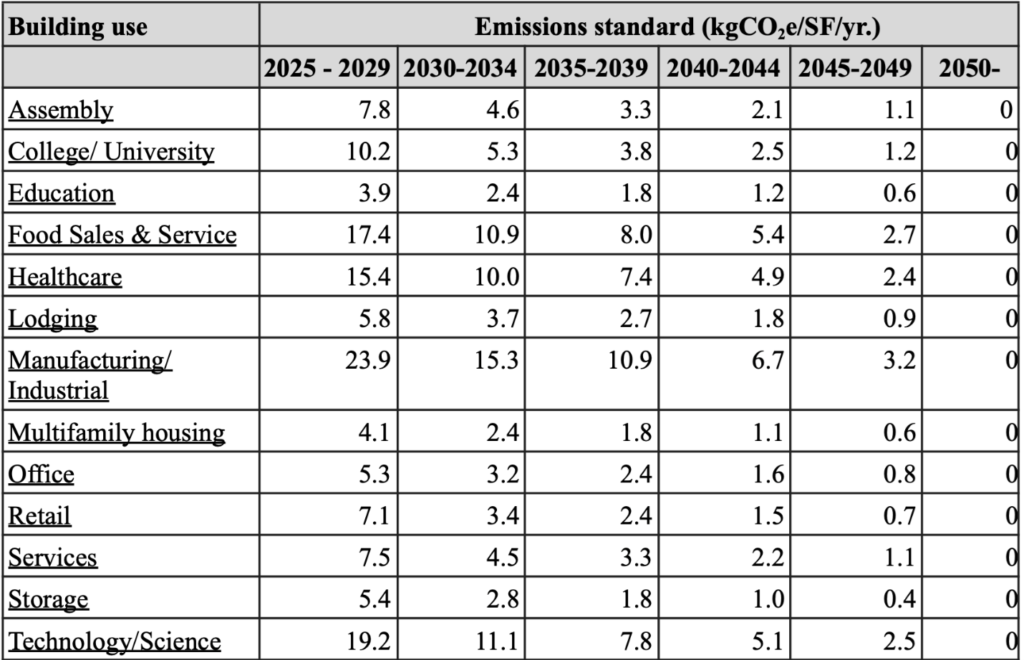New Ordinance Pushes Building to Reduce Net Emissions
Earlier this fall, Boston took a massive step in tackling the city’s single largest carbon-emissions source—buildings. Joining just three other US cities with similar mandates—New York, Washington DC, and Seattle—Boston City Council unanimously adopted the Building Emissions Reduction and Disclosure Ordinance (BERDO 2.0) requiring the city’s largest buildings to decrease their net emissions to increasingly aggressive targets. The first set of targets must be reached by 2025 and by 2050 all eligible buildings must achieve net-zero emissions.
As a carbon consulting firm, we help a wide range of industries meet the targets put out by the BERDO 2.0 legislation and similar ones throughout the country.
What Is BERDO 2.0?
BERDO 2.0 will play a pivotal role in Boston’s citywide 2050 carbon-neutrality goal. Mayor Kim Janey celebrated the ordinance as a “monumental achievement that will have positive impacts on our residents for generations to come” saying in a press release “this policy is the single most impactful initiative to curb Boston’s carbon emissions.”
The law applies to all buildings of at least 20,000 square feet or 15 housing units. While just 4% of the city’s buildings fall into one of these two categories, these large buildings account for 42% of all citywide emissions.
How BERDO 2.0 Was Crafted
Boston tapped into both technical and community expertise to craft BERDO 2.0. Using benchmarked building emissions and energy data as a reference point, Boston contracted Synapse Energy Economics to help establish realistic emissions targets and penalty structures for the ordinance. Scores of community meetings also led to the inclusion of a review board in BERDO 2.0’s structure made up of at least two thirds community members responsible for holding buildings accountable and deciding any potential building-specific exemptions.
The review board will also oversee the Equitable Emissions Investment Fund—an initiative also championed by community members—where all BERDO 2.0 fines and compliance payments will be pooled. At the discretion of the review board, these funds will be used to realize various environmental justice initiatives across the city including the construction of low-income eco-friendly affordable housing, indoor and outdoor air quality improvement projects, green workforce training, and community-owned renewable energy infrastructure.
How to Meet BERDO 2.0 Targets
Like with building emission standards in other US cities, building owners can utilize a combination of two main emissions-reduction avenues to reach compliance. The first and most straightforward of these approaches is to undertake building efficiency retrofits. This could include swapping out traditional lighting with LED systems, installing occupancy sensors, electrifying heating and cooking operations, and improving building insulation to reduce overall energy load.
The second key route of compliance is for buildings to produce or purchase renewable energy to power their electricity needs. This approach allows buildings to reach their emissions-reduction targets with less interruption to existing building operations. Instead, building owners can purchase and then retire certified Renewable Energy Credits (RECS) from existing renewable energy sources to count towards building emissions reduction. Essentially shifting their emissions reduction offsite by swapping emissions-intensive fossil-fuel derived electricity with electricity purchased from renewable emissions-free sources like solar or wind.
No matter which approach or combination of approaches individual buildings choose to reach compliance, BERDO 2.0 requires all building owners to submit yearly reports using ENERGY STAR Portfolio Manager beginning in 2022 detailing their progress. These reports are subject to third-party verification at varying intervals depending on the building type and will be used to measure each building’s total metric tons of CO2e emissions per square foot (kgCO2e/SF/yr), BERDO 2.0’s compliance metric. The total allowable kgCO2e/SF/yr for each building type decreases across each compliance cycle and by 2050, each building type in the law’s scope will need to achieve 0 kgCO2e/SF/yr thus becoming net-zero emissions buildings.
BERDO 2.0 Emissions Compliance Standard

Buildings unable to reach their required emissions standard through retrofits and RECs alone must opt for alternative compliance payments of $234 per excess metric ton of CO2e. A noncompliant building’s failure to make these payments can result in fines of up to $1,000 per day. All payments and fines will be pooled into the previously discussed Equitable Emissions Investment Fund.
Through BERDO 2.0 Boston has positioned itself at the forefront of US city building energy and emissions reductions. The successful rollout, implementation, and enforcement of the legislation will see Boston’s net emissions decrease drastically over the next three decades placing the city well on its way to achieving carbon neutrality by 2050. Environ is a full-service energy management consulting firm that crafts personalized carbon legislation compliance solutions for our clients. Call (800) 375-1457 or fill out our contact form to get in touch with us. We would love to help your organization work towards carbon neutrality and BERDO 2.0 compliance!